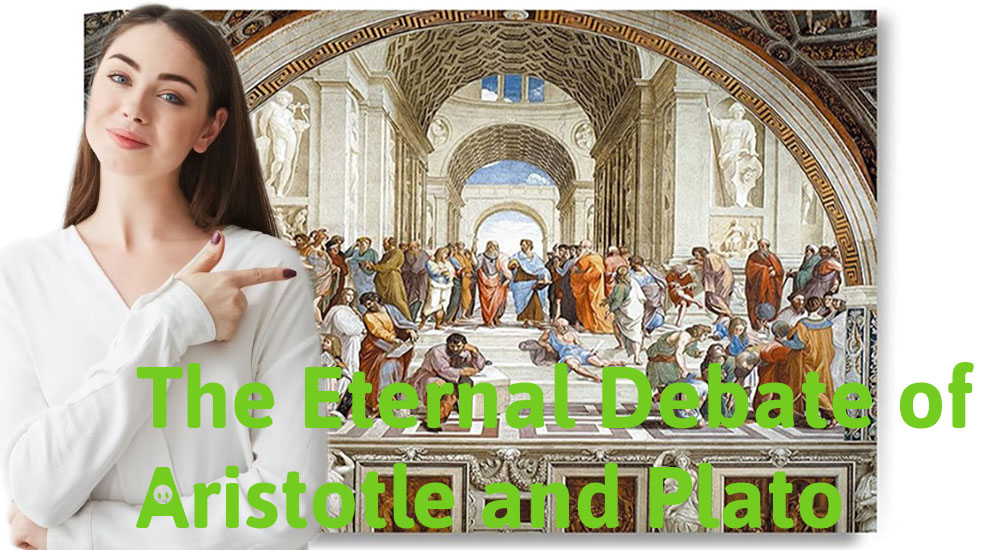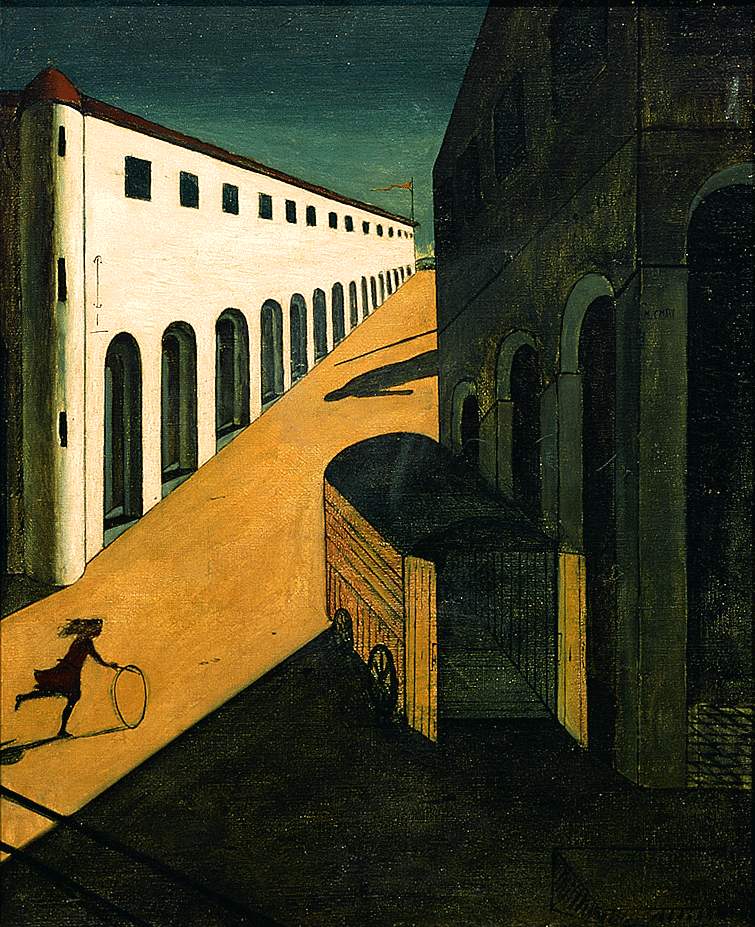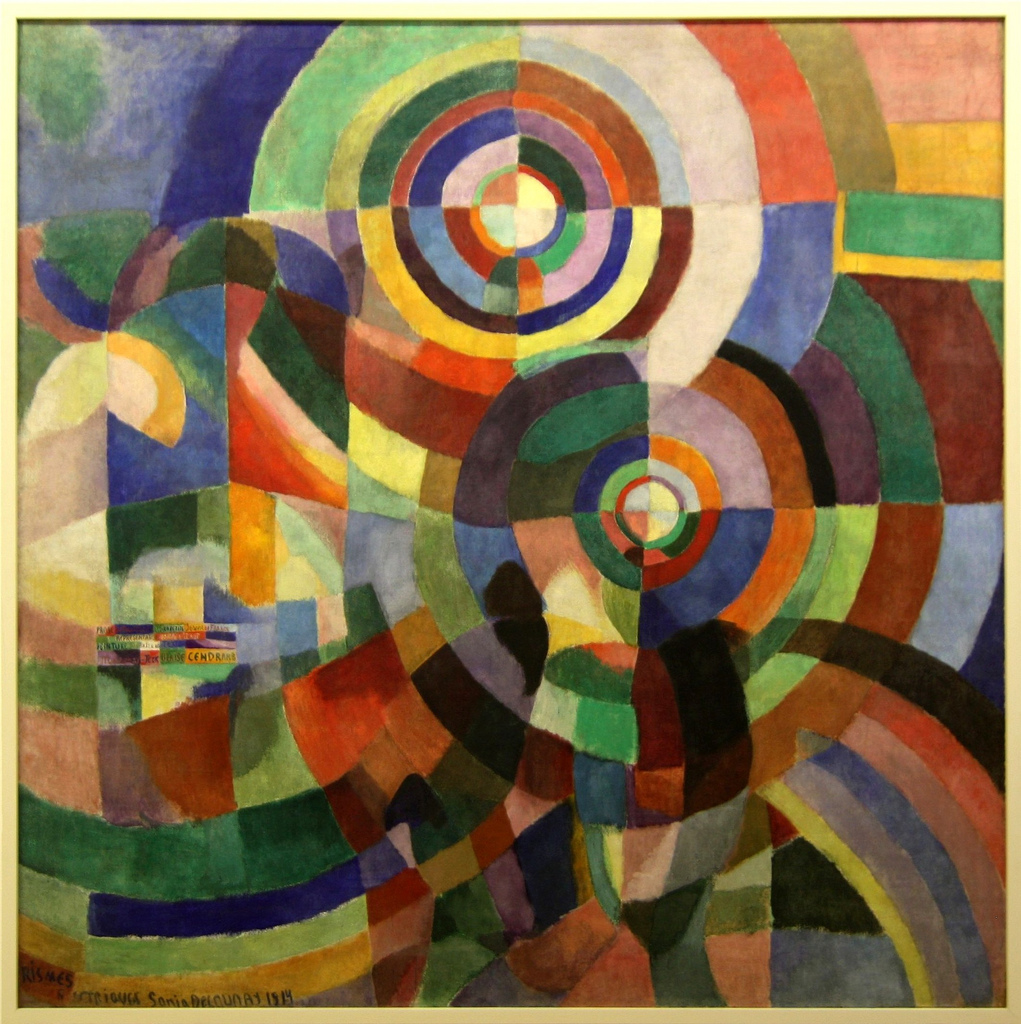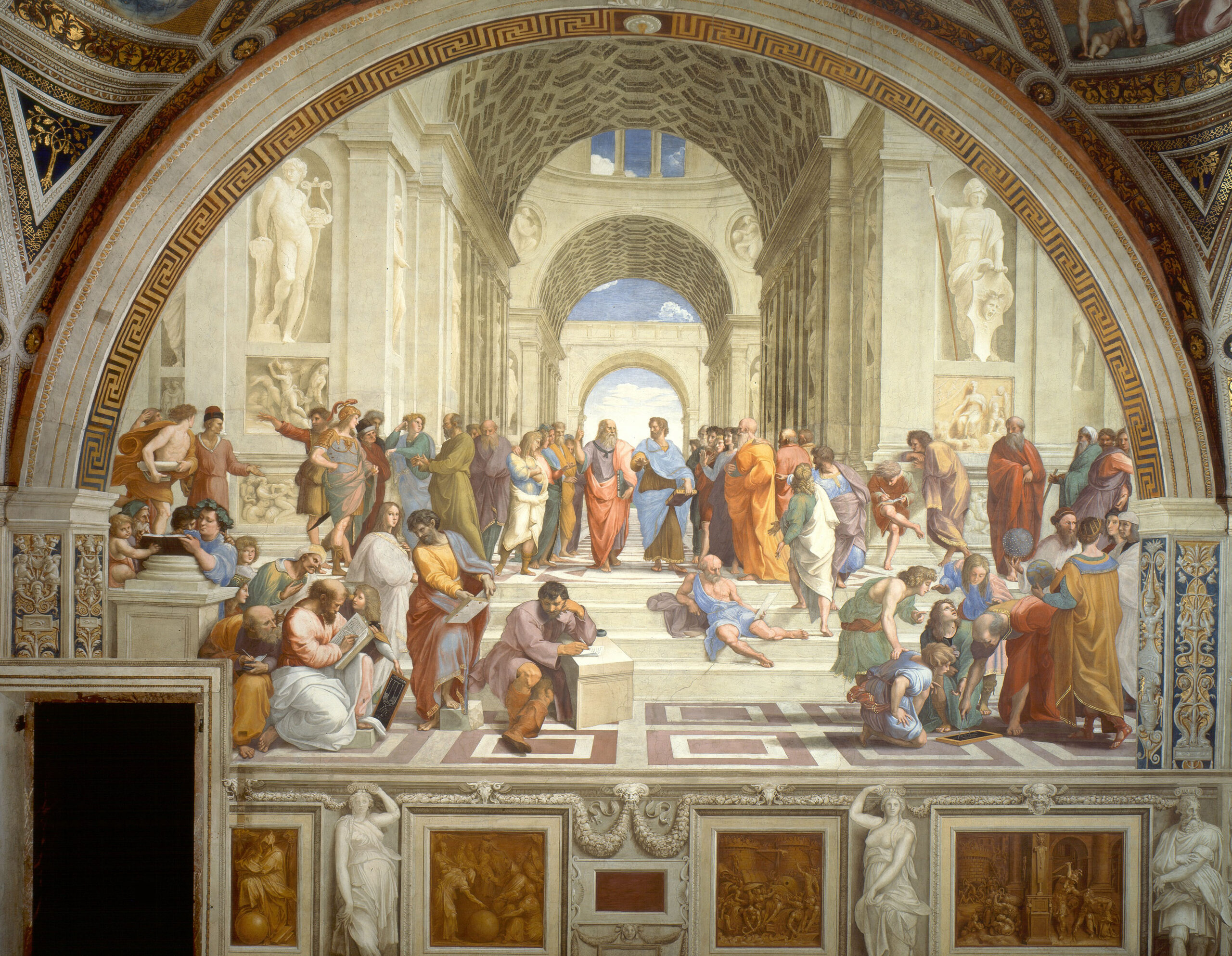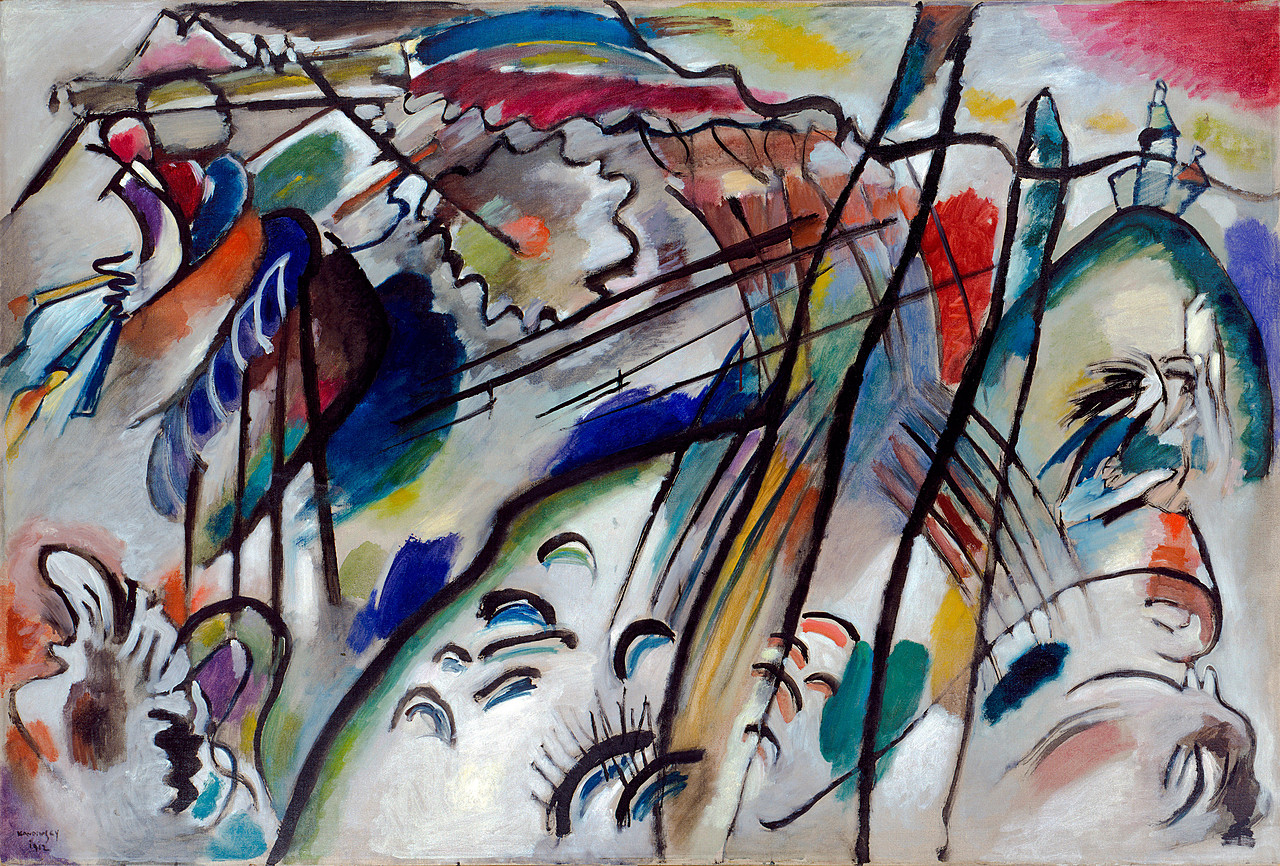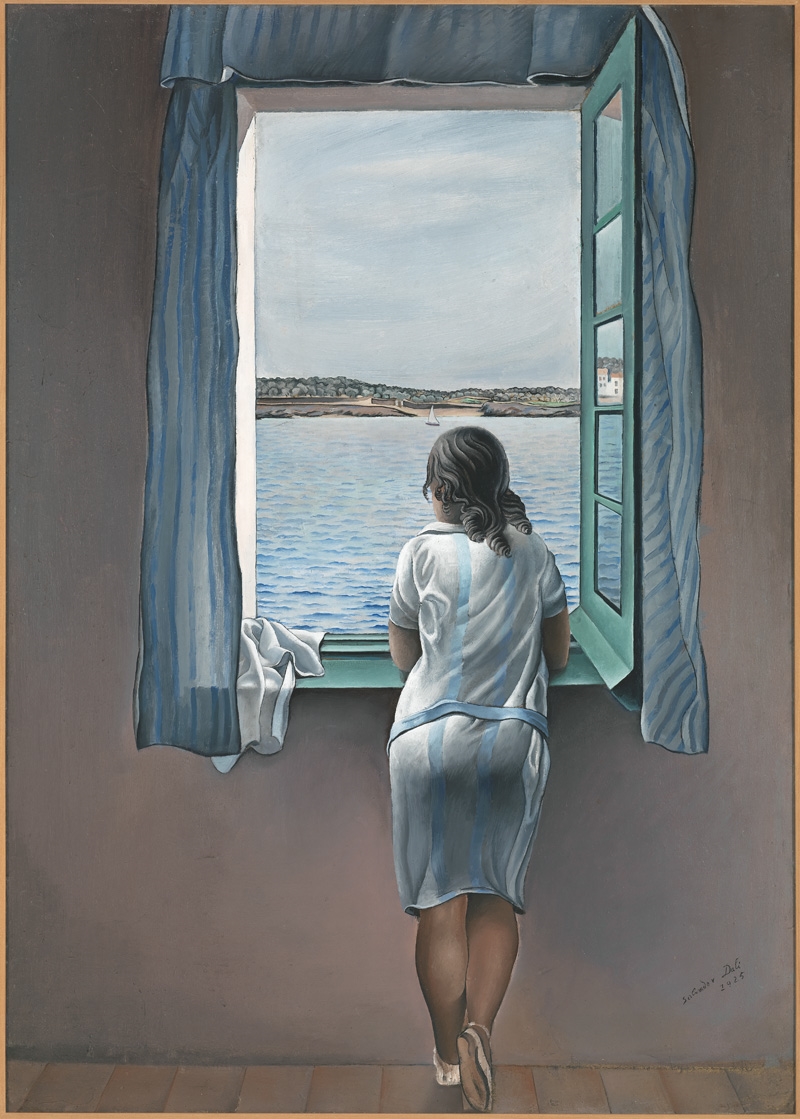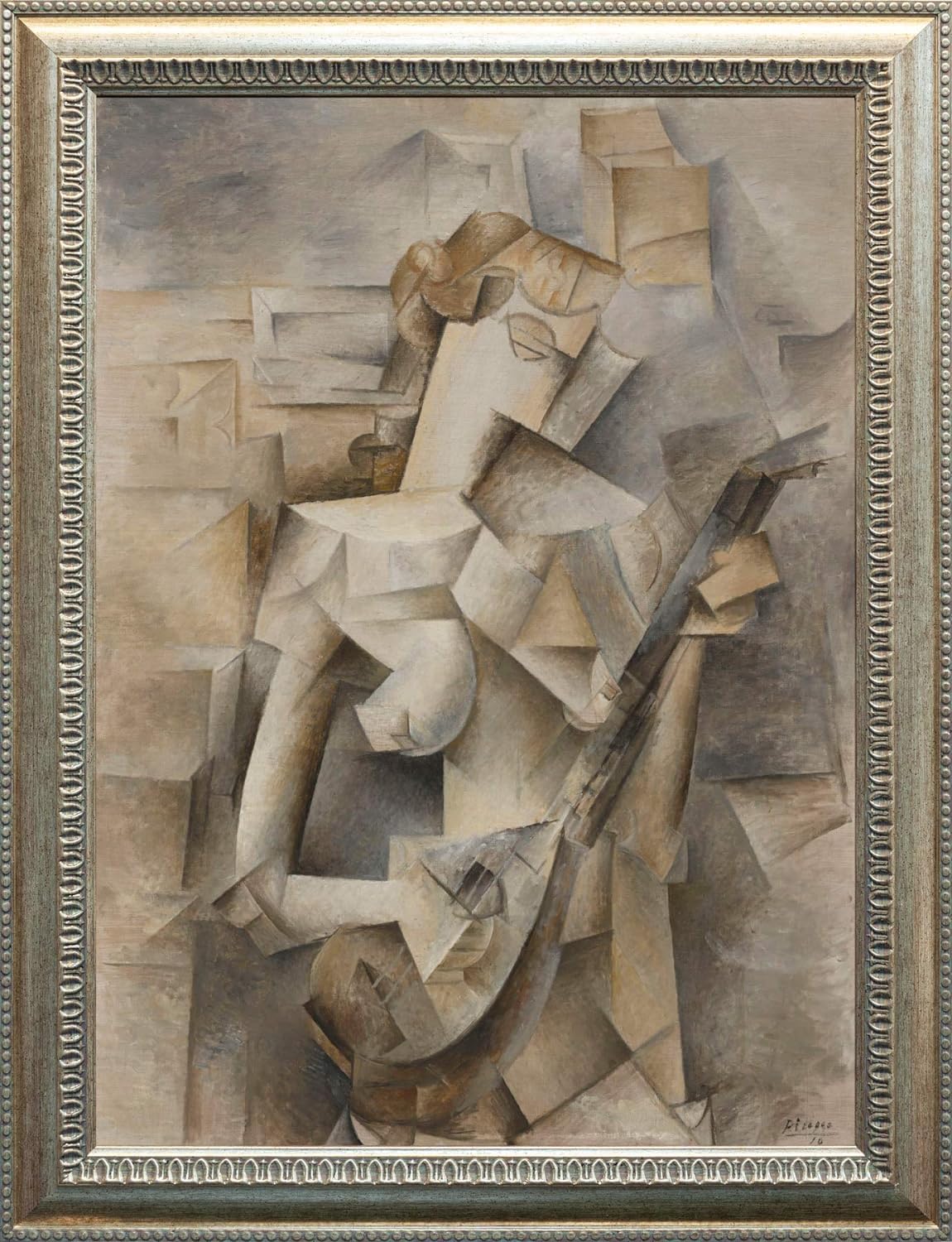This iconic painting, completed in 1511, not only captures the grandeur of classical antiquity, but also embodies profound philosophical ideas. At its core, the fresco presents the enduring dialogue between two great philosophers, Plato and Aristotle, each symbolizing distinct philosophical doctrines.
In this article we delve into the rich symbolism and historical context of this masterpiece to better understand the intellectual debate it represents.
Tabla de contenidos
- Historical significance in Aristotle and Plato Painting
- Verticality & Duality, The Central Theme of Aristotle’s and Plato’s Painting
Historical significance in Aristotle and Plato Painting
Papal Authority in Times of Doubt
Commissioned by Pope Julius II in the 16th century, the School of Athens was intended to adorn the Pope’s personal library and to reinforce the authority of the Church at a time when its authenticity was doubted.
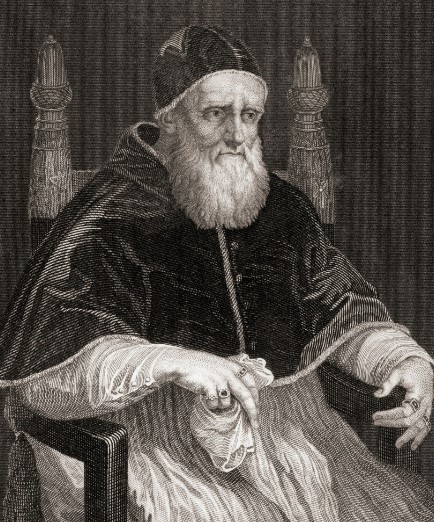
Raphael’s Figures in Preparation for ‘The School of Athens’
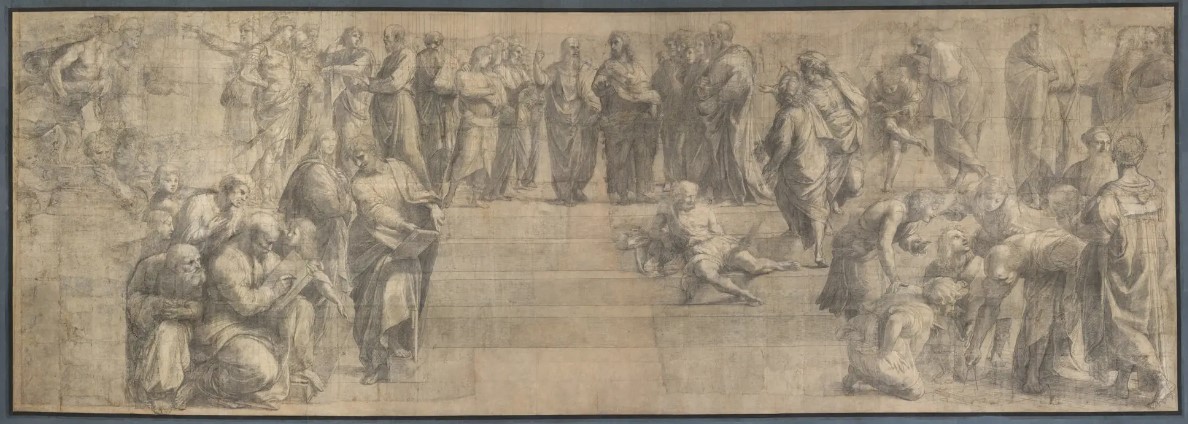
This preliminary sketch was made by Raphael in preparation for his masterpiece, «The School of Athens». It shows a group of human figures, grouped and positioned in various poses, reflecting a detailed study of composition and attention to detail. The figures, drawn with great skill, present diverse expressions and gestures that suggest a profound interaction and intellectual communication between them. Although the drawing is limited to the gray tones of charcoal or a similar dry medium, the handling of light and shadow is exceptional, giving the scene a sense of depth.
The Essence & Reason
Raphael’s ingenious approach consisted of harmoniously blending pagan wisdom (Earthly) with Christian doctrine (Heavenly). This artistic endeavor was intended to demonstrate that philosophy, science and theology shared a common goal: the search for universal truth. In addition, it subtly flattered the Pope by portraying a fictitious papal court, symbolic of his elite followers.
The emblematic characters:
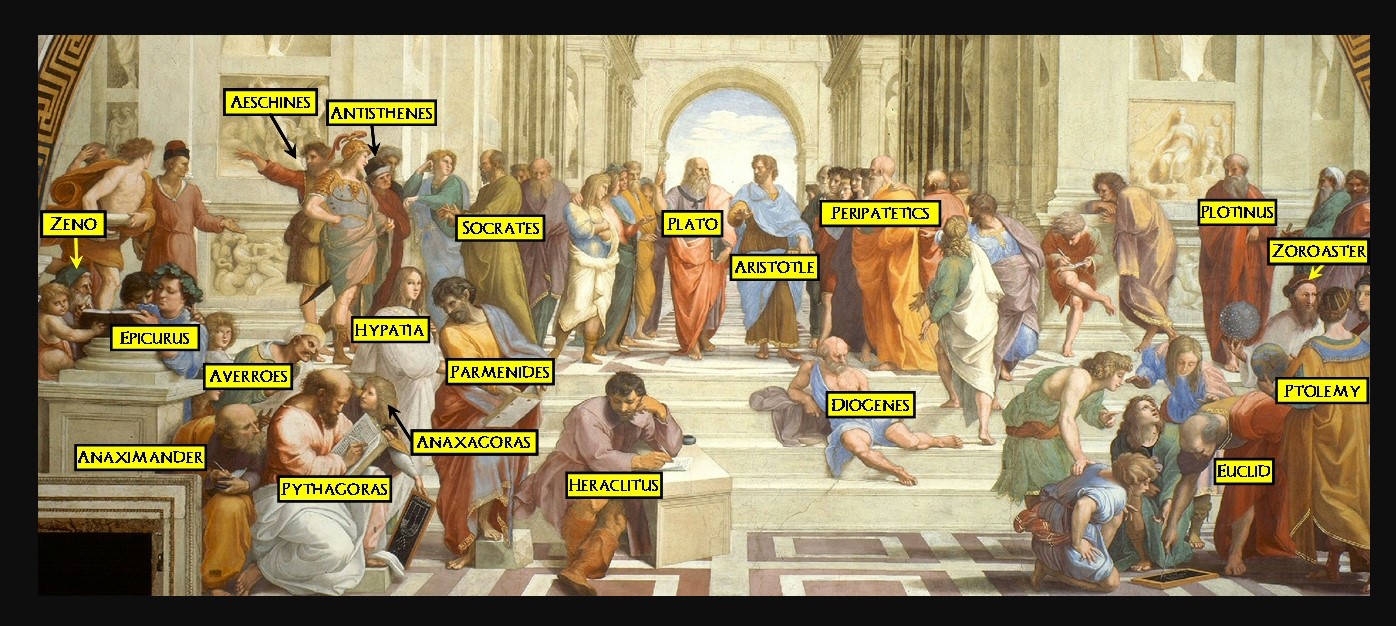
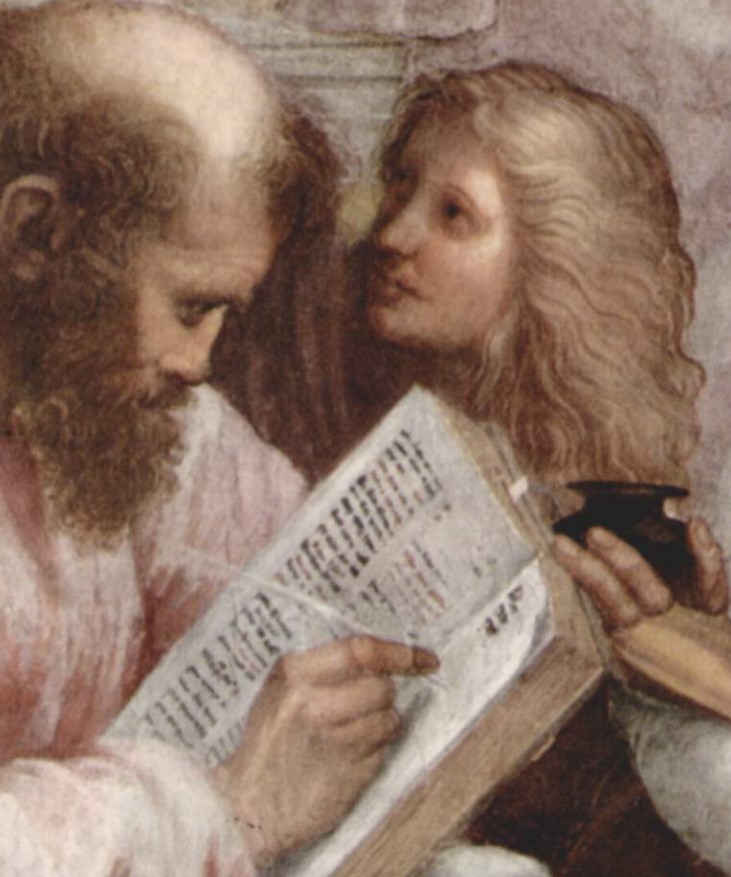
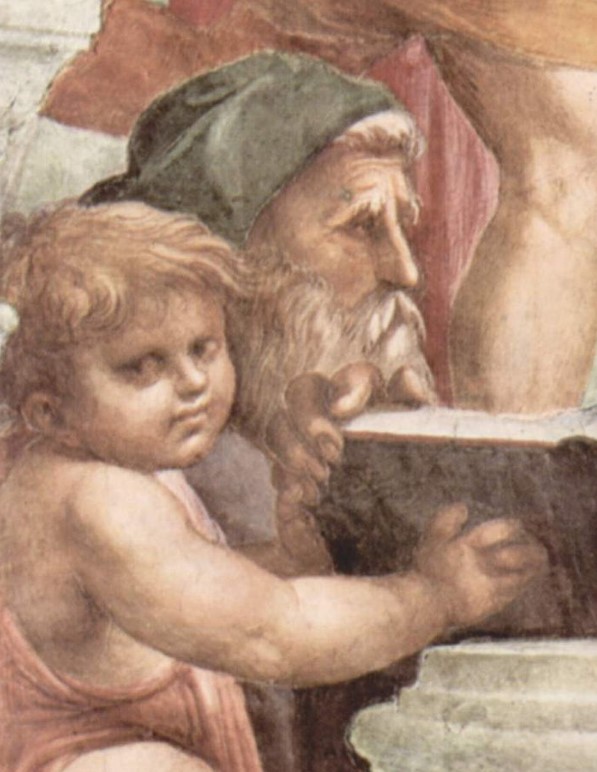
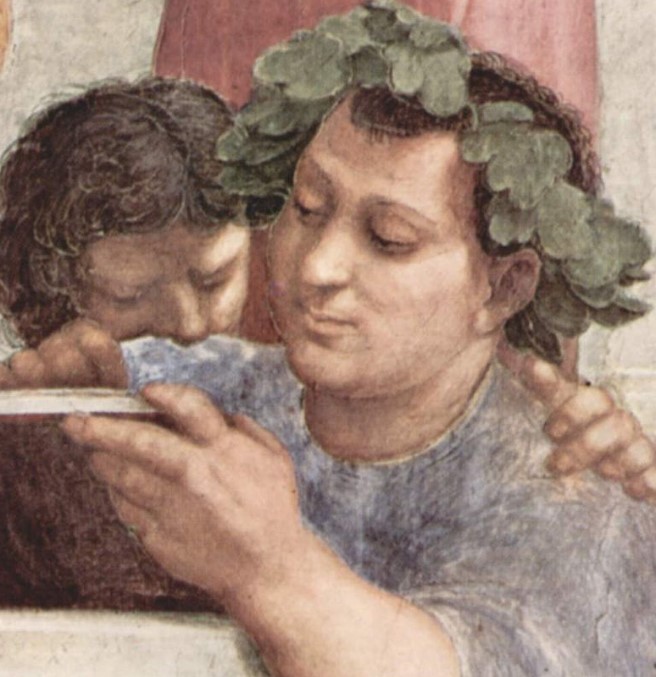

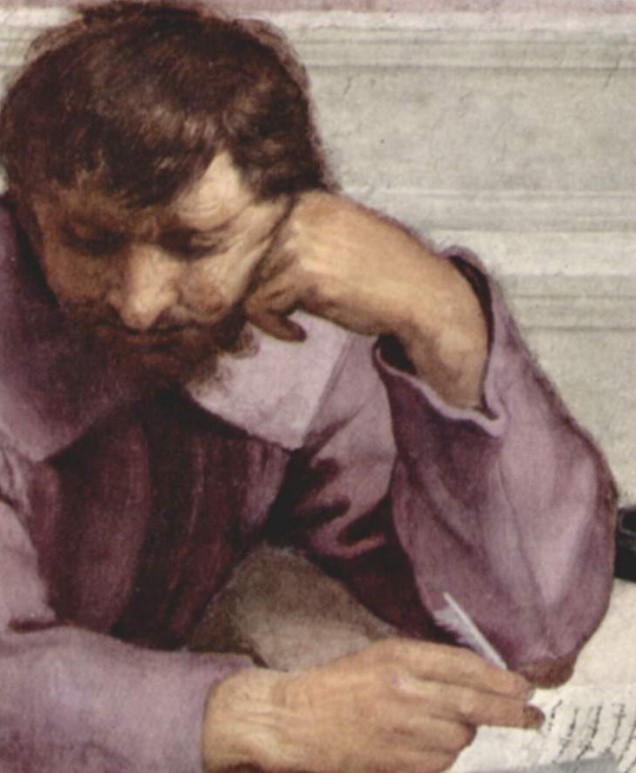
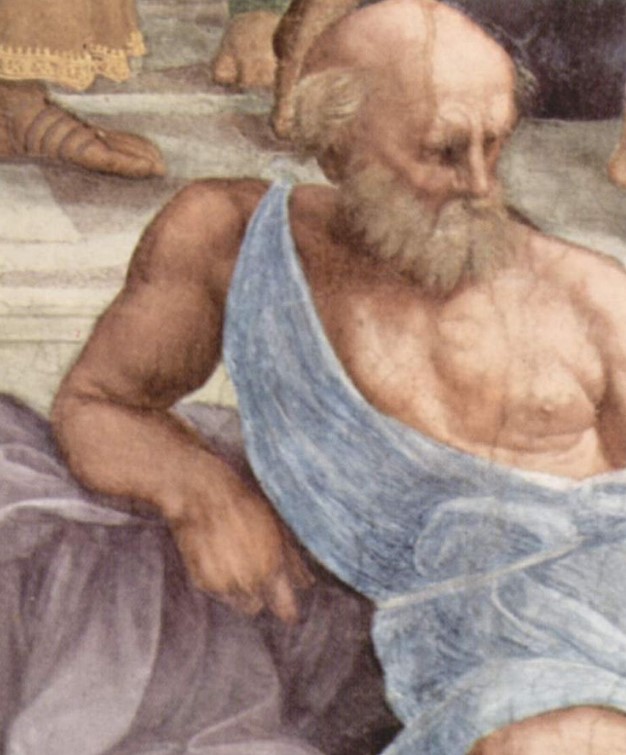
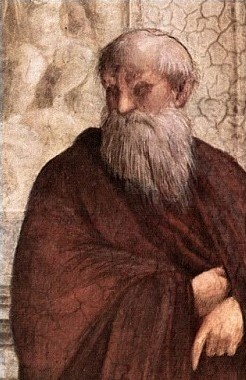
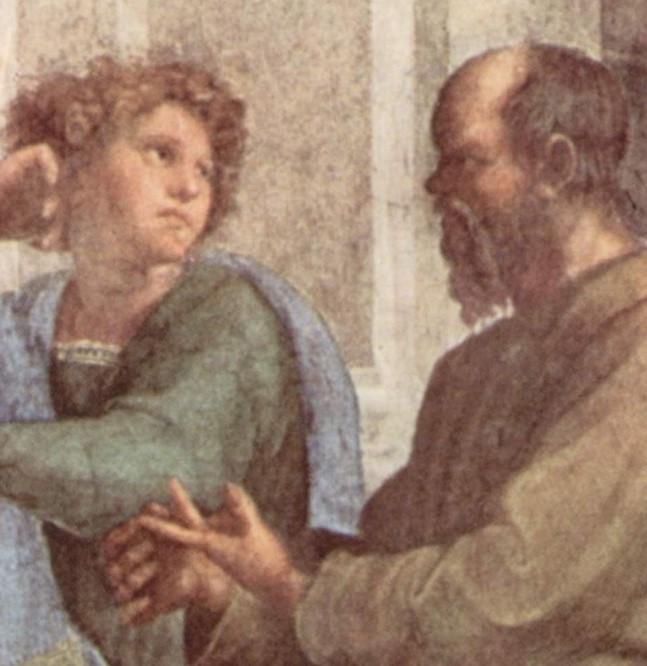
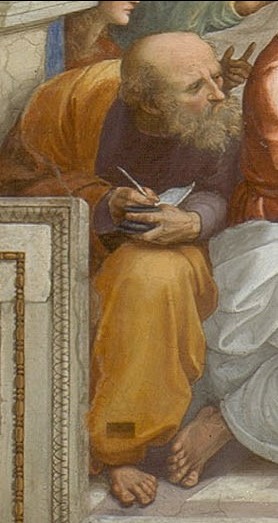
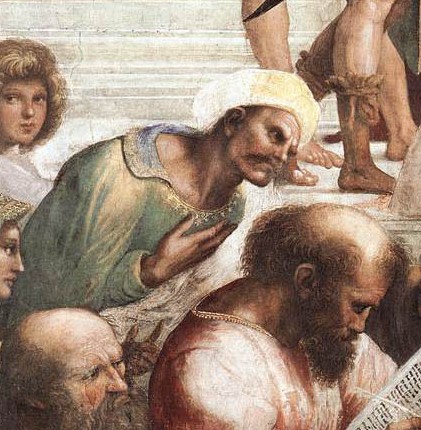
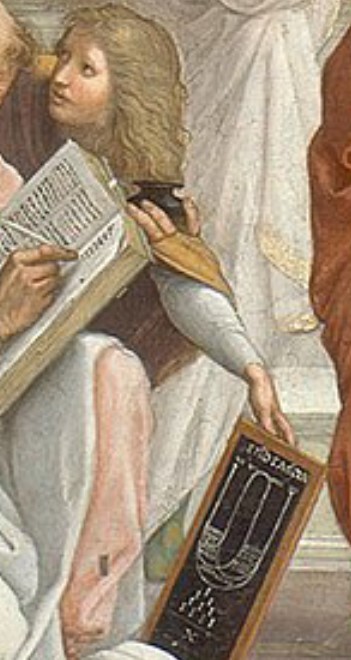
One of the most striking features of the fresco is its enormous size, which accommodates a total of 52 emblematic figures. In the center are Plato and Aristotle, whose positions symbolize a philosophical contrast. Around them are eminent figures representing various philosophical currents and sciences, such as Pythagoras, Socrates, Heraclitus and Euclid, among others. The painting explicitly highlights the rivalry between Plato’s idealism and Aristotle’s empirical approach.
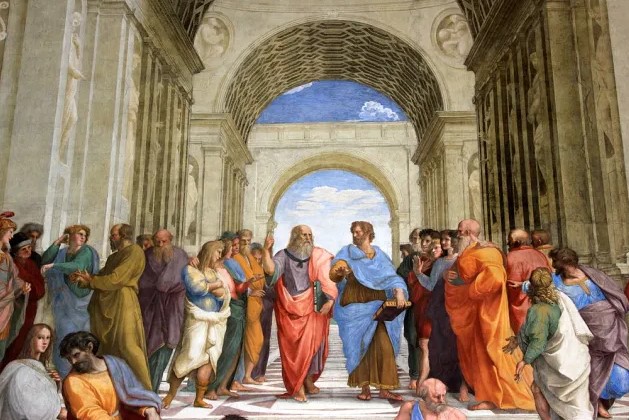
In the Heart of the Vatican
Raphael’s School of Athens (Scuola di Atene), a monumental fresco located in the Vatican’s Stanze di Raffaello, is a masterpiece that transcends aesthetics. Approximate dimensions: 4 meters high and 8 meters wide
The First Jewel of the Vatican Stays
The Sala della Segnatura is one of the four rooms found in the Vatican Museums. These rooms were decorated by the famous Renaissance artist Raphael Sanzio and his pupils. The Sala della Segnatura was the first room to be decorated by Raphael, and is believed to have been used as Pope Julius II’s personal library.
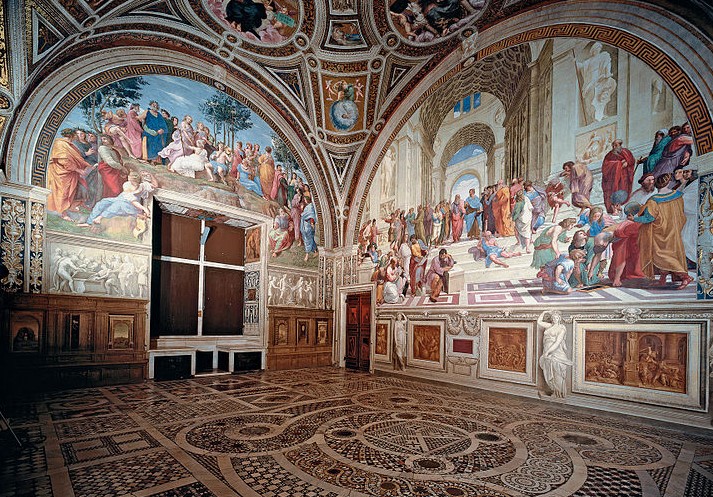
The following article may interest you: Young Woman at a Window Dalí’s Surrealistic Glimpse into Youth
Verticality & Duality, The Central Theme of Aristotle’s and Plato’s Painting
Verticality is a way of understanding how we humans perceive our relationship with the world, distinguishing between what is earthly (everything we can touch and see) and what is celestial (ideas or concepts that we consider perfect or ideal, such as heaven). This reflects our constant desire to go beyond what we can experience, seeking to reach or comprehend something higher or more perfect. This idea can be seen in the contrast between the two philosophers below.
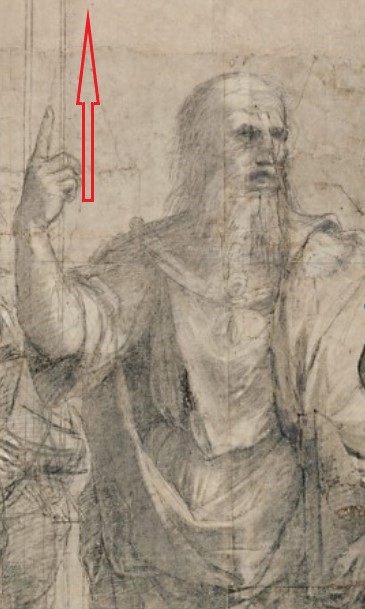
Plato’s Vision
Plato believed that our everyday reality is only an imperfect copy of a higher, unchanging world, filled with universal truths and ideal values such as beauty and justice. According to him, what we experience in our daily lives is only a reflection of that ideal world
Aristotle’s Perspective
On the other hand, Aristotle, who was a student of Plato, thought differently. He argued that our real world, everything we can see and touch, is what is important. For Aristotle, perfect ideals and concepts do not exist. According to him, true knowledge comes from exploring and understanding the world around us.
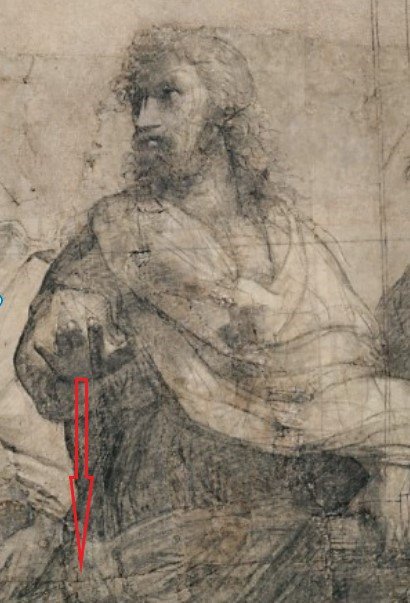
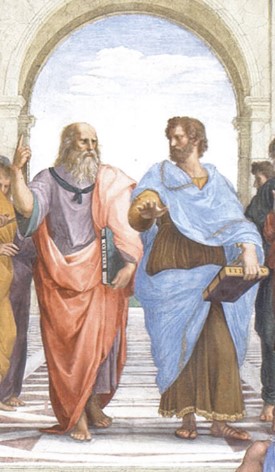
Plato Pointing Up Aristotle Pointing Down
Plato and Aristotle, the focal point of the fresco, engage in a visual debate through their postures and gestures. Plato, with his finger pointing to the sky, alludes to the theory of a higher reality and idealism. In contrast, Aristotle extends his hand downward, emphasizing earthly reality and empiricism. This dichotomy is further accentuated by the reversal of the colors of their garments, With Plato in a red tunic and Aristotle in a Blue tunic.
The Struggle Between The Tangible & The intangible: A Longing for Human Experience
The discussion between these two great thinkers shows a constant tension in the human experience: the struggle to accept the world as it is (the tangible and real) and the desire to reach for something higher or ideal (the intangible or celestial).
We live in a physical world, interacting with what is around us, but always hoping to reach a more ideal and perfect existence, something we imagine being on a higher level.
Symbolism of the staircase:
Raphael ingeniously employs the grand staircase as an allegory of knowledge. It represents the hierarchy of philosophy and science, in which each character occupies a specific place corresponding to his importance and prestige. In addition, the ladder signifies the path to knowledge, highlighting the ascent that philosophers and scientists undertake in their search for truth.
The omission of women:
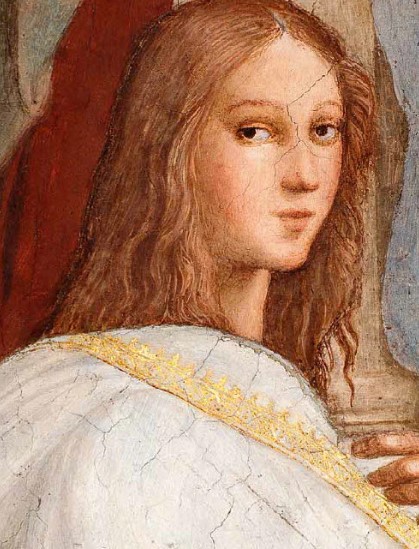
The Renaissance era in particular had its limitations, including the underrepresentation of women. Hypatia of Alexandria is the only woman depicted in the fresco, a significant acknowledgement of her contributions to mathematics, astronomy and philosophy.
Raphael’s The School of Athens is much more than a visually captivating work of art: it is a philosophical masterpiece that encapsulates the enduring debate between Plato and Aristotle. It reflects the intellectual climate of its time, while transcending the ages with its symbolism and profound messages.
This monumental fresco is a testament to the eternal quest for knowledge and the enduring legacy of two of history’s greatest philosophers, and invites the viewer to contemplate the timeless wisdom it embodies.

